Galle National Museum with a collection of traditional industries heritage and other artefacts - Last part
Hello my fellow Architecture+Design community,
Greetings from Sri Lanka. Guys you already know how important is National Museum in Galle city because I already published two episodes about the heritage of that museum. You can find part 1
here and also you can find part 2 here. I give opportunity to explore valuable things from this content without explain more information. Let's go ahead.
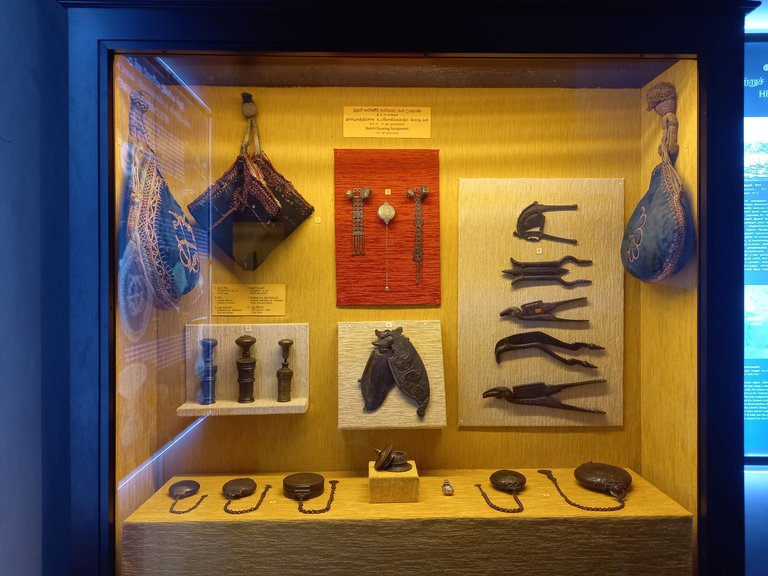
For the practice of chewing betel, which is a social custom in Asian and South-East Asian countries since the past, tools such as Arecanut cutters, Chunem boxes, Spittoon, tobacco boxes, betel mortar, Betel trays etc. have been used. These instruments are usually made of brass. It is recognized that betel-nut mortars with ivory shafts were sometimes used by elites and royalty. Ivory and animal horns have also been used to create manjusa. The tree that is used to cut betel nuts is also a unique design among these.
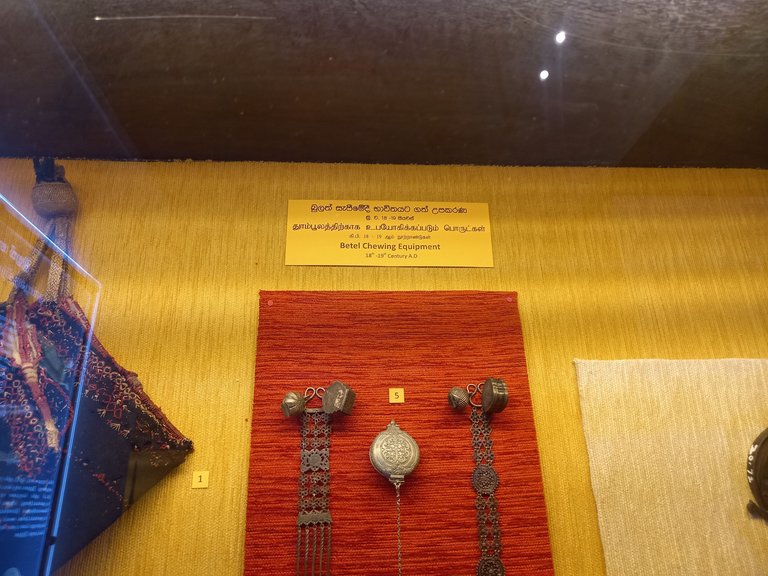
The Galle National Museum has a booth displaying the equipment used in betel chewing dating back to the 18th and 19th centuries AD.
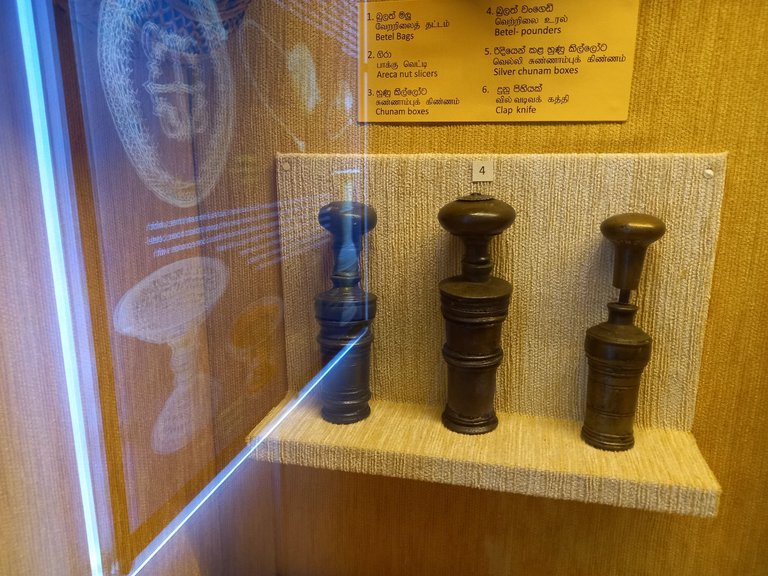
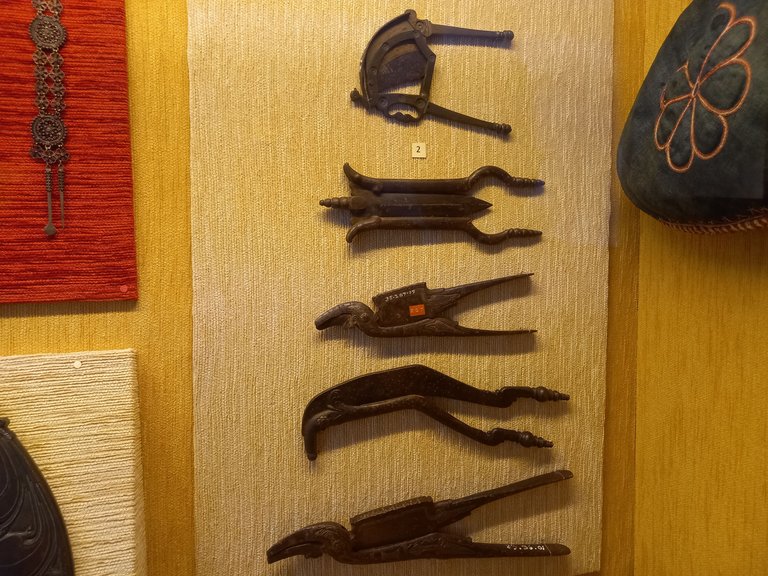
Several Areca nut slicers in the shape of various imaginary animals are seen in this museum for cutting the betel nut needed for crunching betel nuts. These are really attractive and culturally valuable antiques.
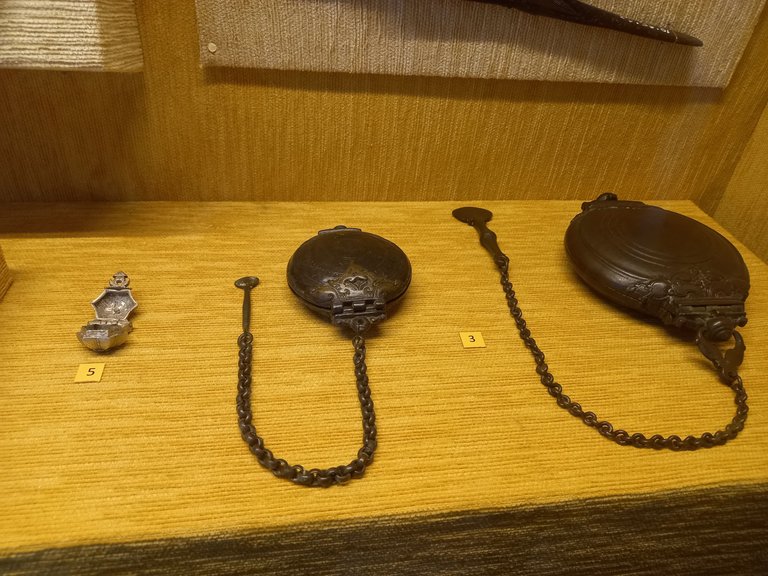
You can see attractive chunam boxes and silver chunam box from above pictures.
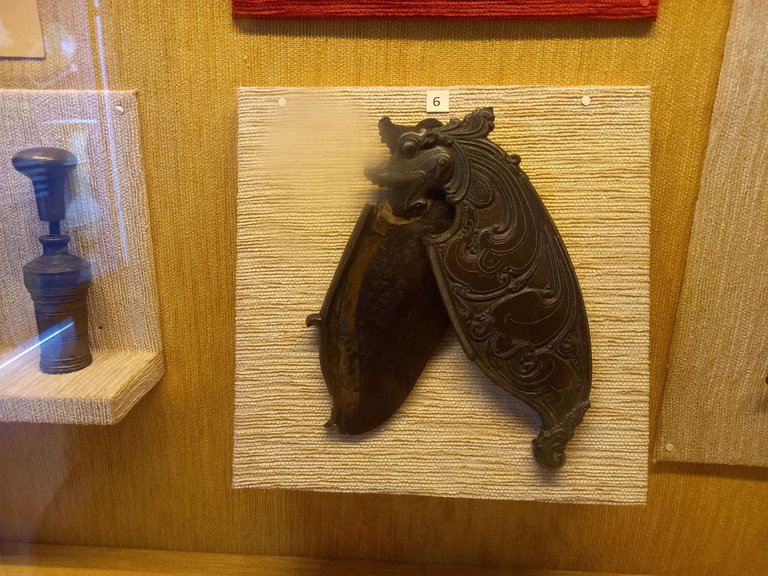
A Clap knife created using traditional carving designs and an image of an imaginary animal can also be seen here.
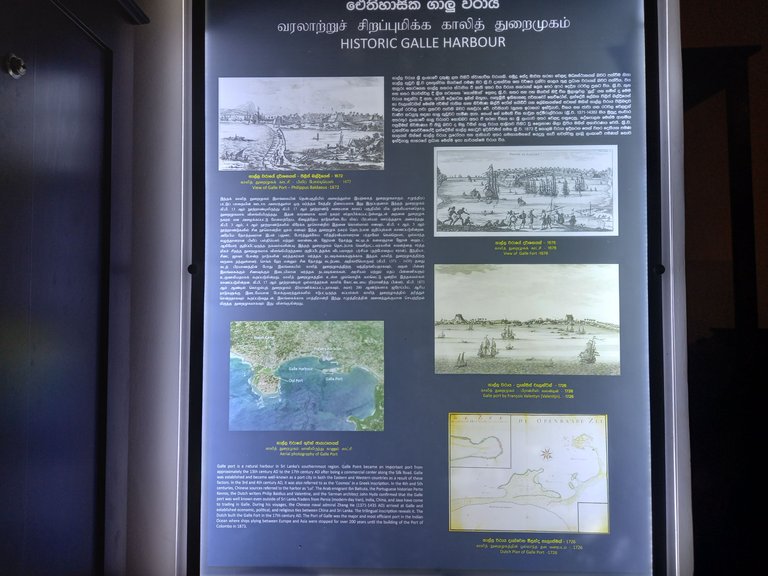
Galle Harbor is one of the most prominent natural harbors in Sri Lanka. Galle Port became a major port from around the thirteenth century AD to the 17th century AD due to its development as a trade center through the Maritime Silk Road. Here you can see the scenes taken in Galle harbor in the years 1672, 1676 and 1726 AD. In addition, a Dutch map showing the Galle port in 1726 AD and an aerial photo of the Galle port can also be seen.
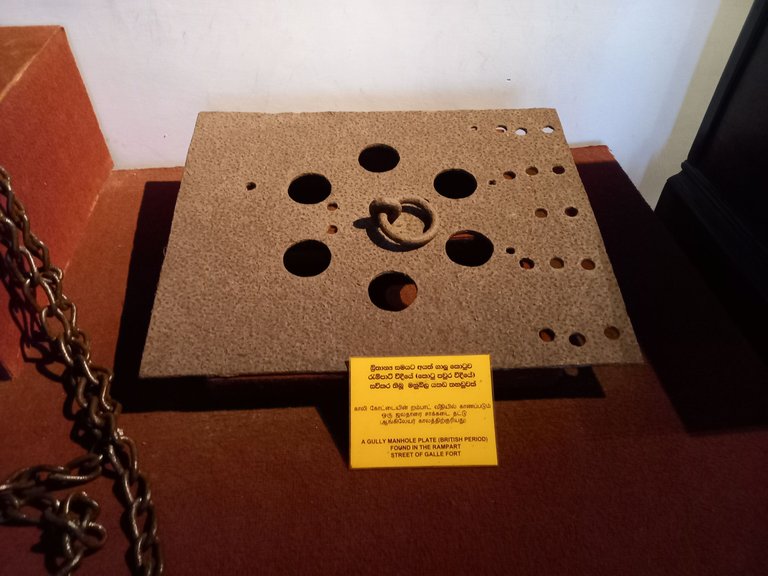
A gully manhole plate found in the Rampart street of Galle made in British period.
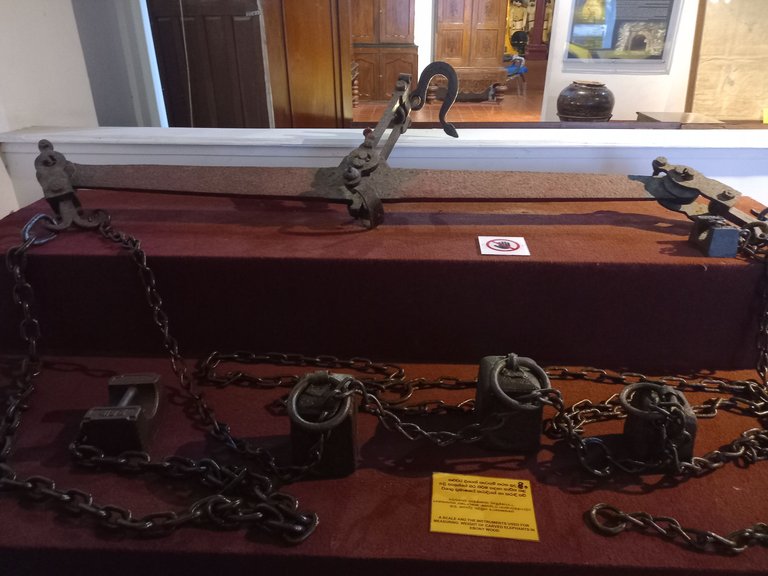
A scale and the instruments used for measuring weight of carved elephants in Ebony wood. This instrument is most important ancient item.
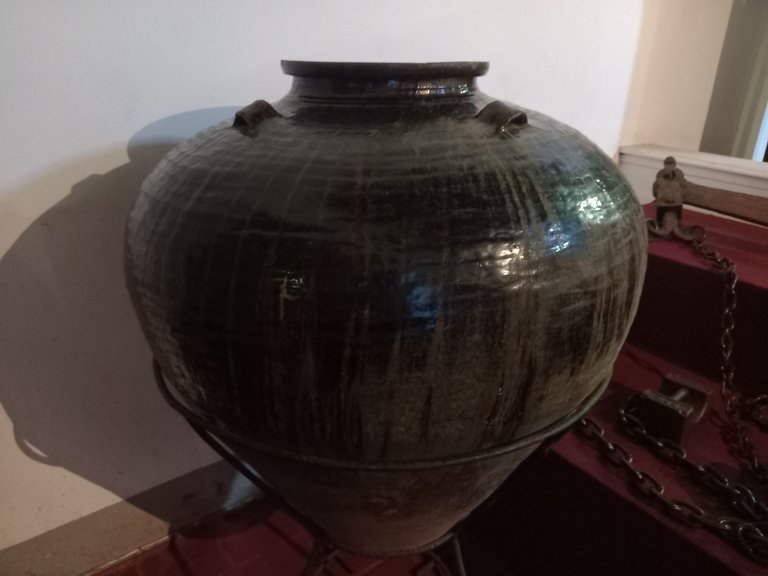
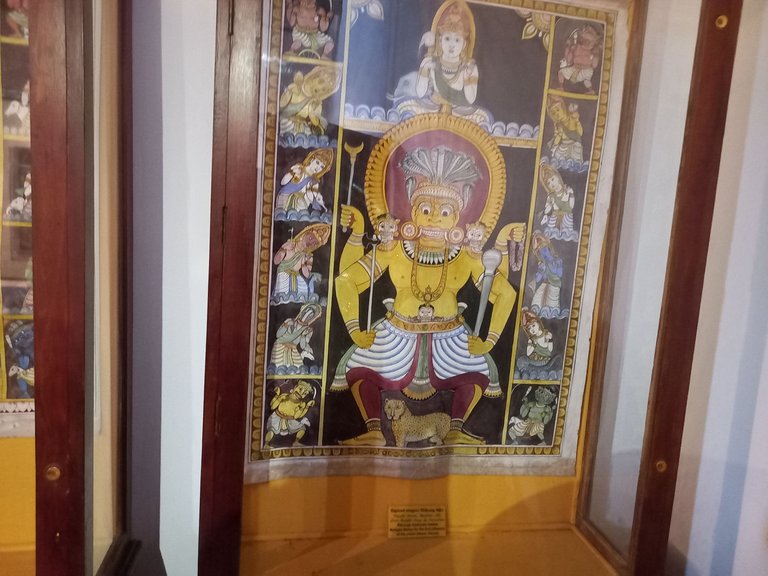
Many people in Sri Lanka have been following faiths and beliefs since ancient times. Accordingly, they believed that various practices should be performed for various evils. According to this, a painting can be seen here showing the Jeevamangala sacrifice against the evil of the planet Venus.
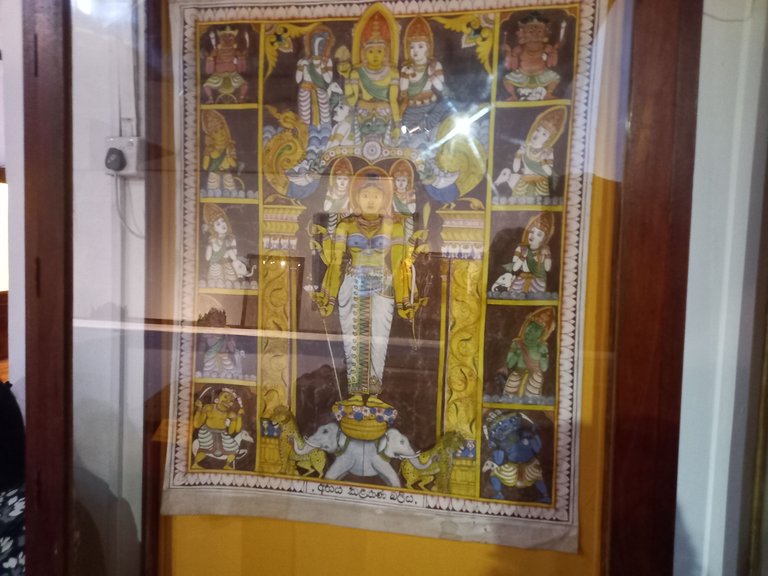
Here you can see a painting depicting the Abhaya Kalyana Sacrifice, which is another practice for such an evil. During the stone age, people worshiped natural objects like stones, sun, sun and water. Accordingly, it is not surprising to hear about such practices for the invisible God.
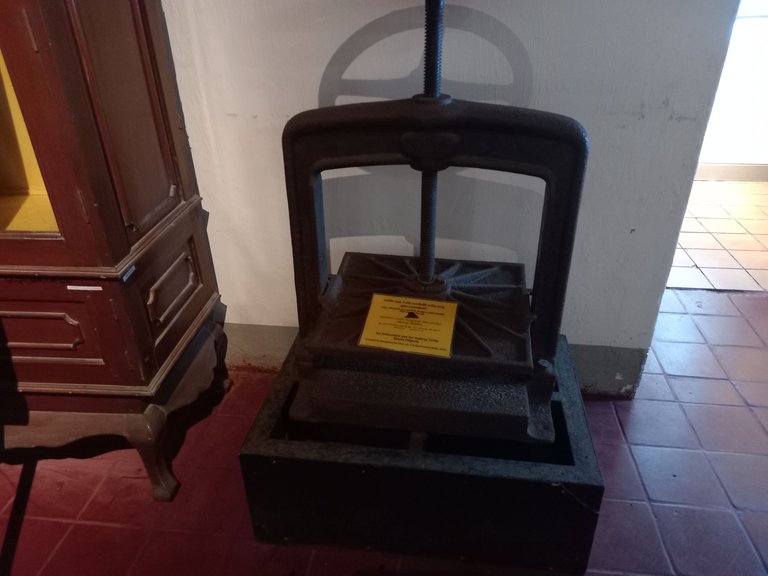
Here you can see a device that is used to prepare various products using turtle shells. This tool is used for creating unique creative tortoise shell designs. The unique shapes created by them add an important value to the present.
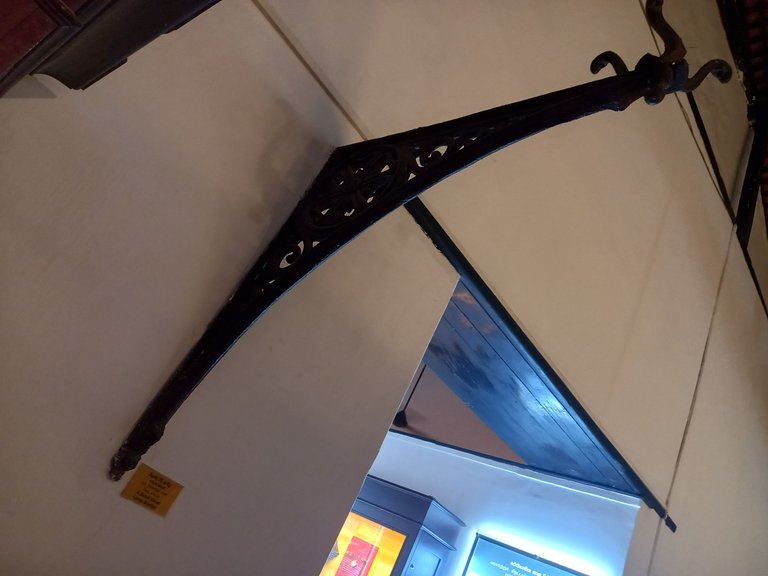
A street lamp support used in the Dutch era can be seen here.
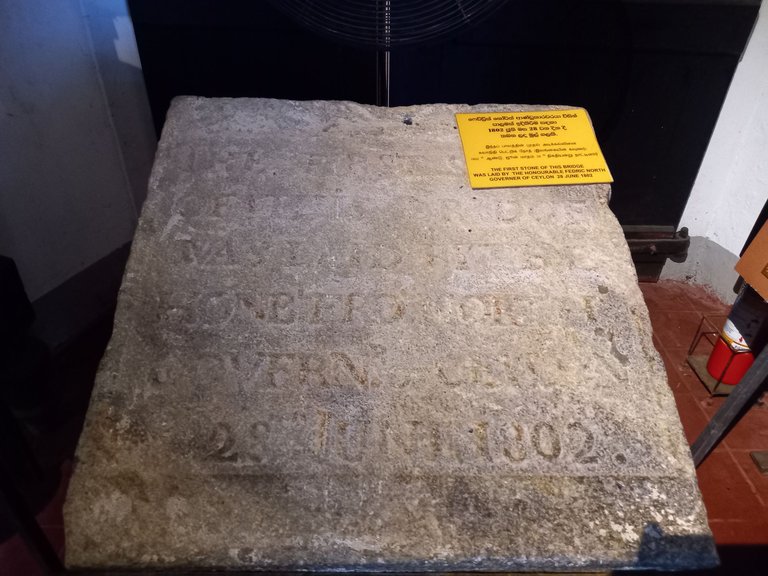
The foundation stone laid by Governor Frederick North on July 28, 1811 can be seen at the Galle National Museum.
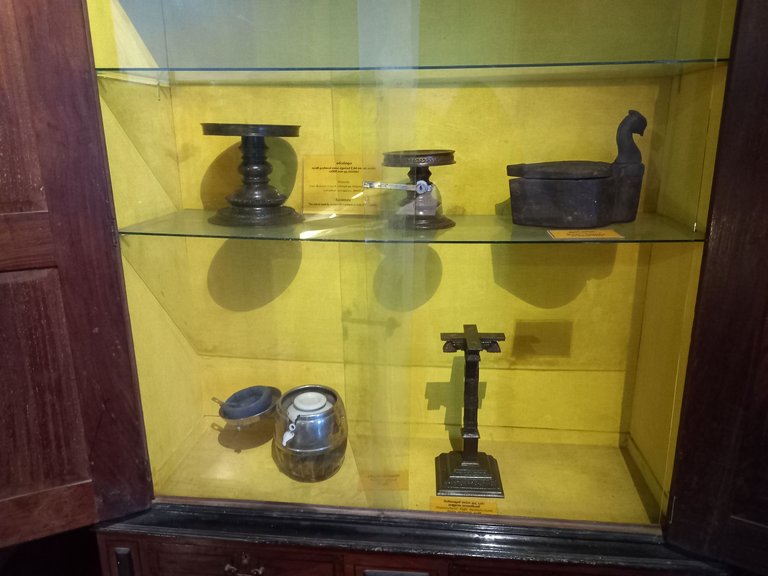

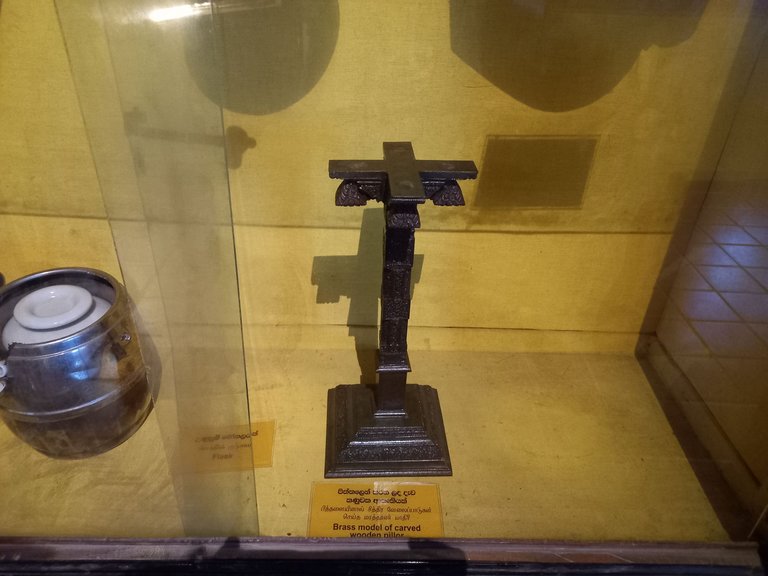
The support used by the ancient Sri Lankans to hold the rice while eating was called serakale. Some such aids can be seen in this museum grounds. A model of a wooden pole made of brass can also be seen at the Galle National Museum grounds.
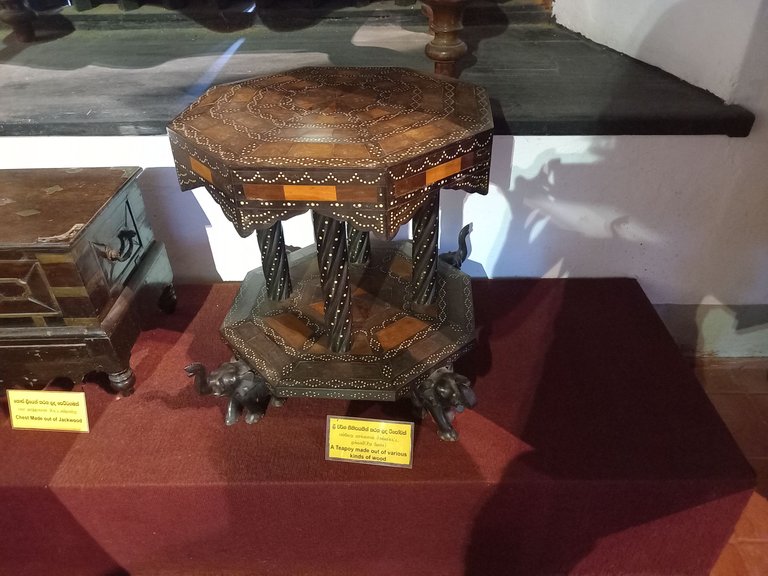
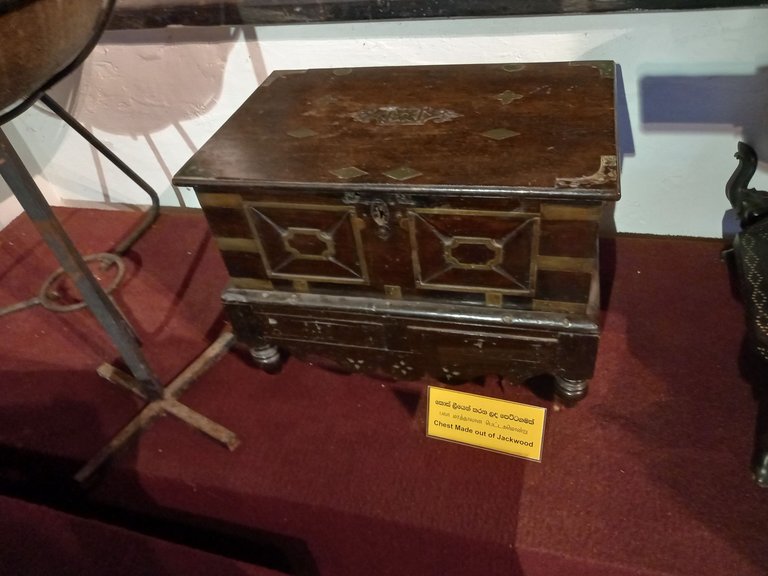
As I walked further into the Galle National Museum, I noticed an attractive teapoy made from several different types of wood and a strong chest made of jackfruit wood.

According to the display board I could see an Ancient clay pot used for production of ayurvedic medicene. Ancient days Sri Lanka was most popularity for Ayurvedic science. So those days some special persons had skills for made ayurvedic medicine for many diseases.
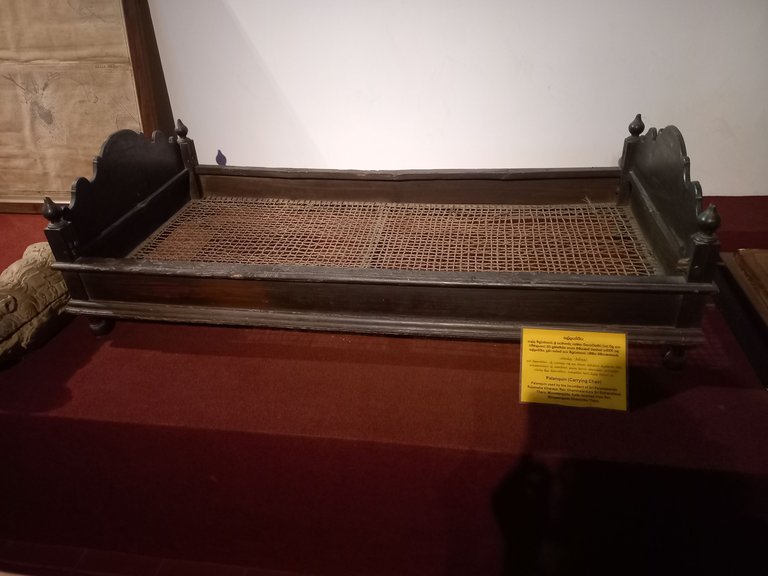
As shown in the display board, Reverend Dhammalankara Siri Sumanatissa Nayaka Thero who worked at the Galle Minuwangoda Sri Paramananda Temple got the used carrying chair from the Reverend Dhammika Thero of Minuwangoda.
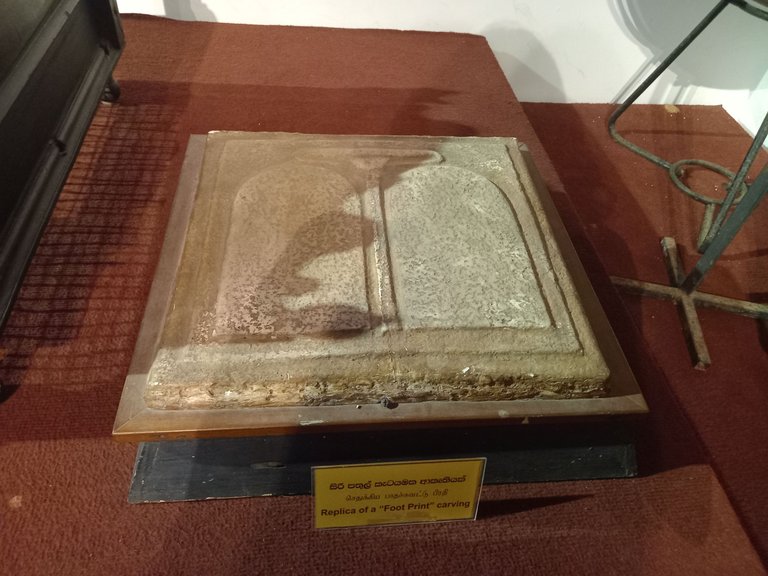
In fact, the Galle National Museum's cultural and ancient artefacts, artefacts, paintings and other elements are all reminders of the ancient history of our country. You can see a model of a carving on the underside of the Buddha.
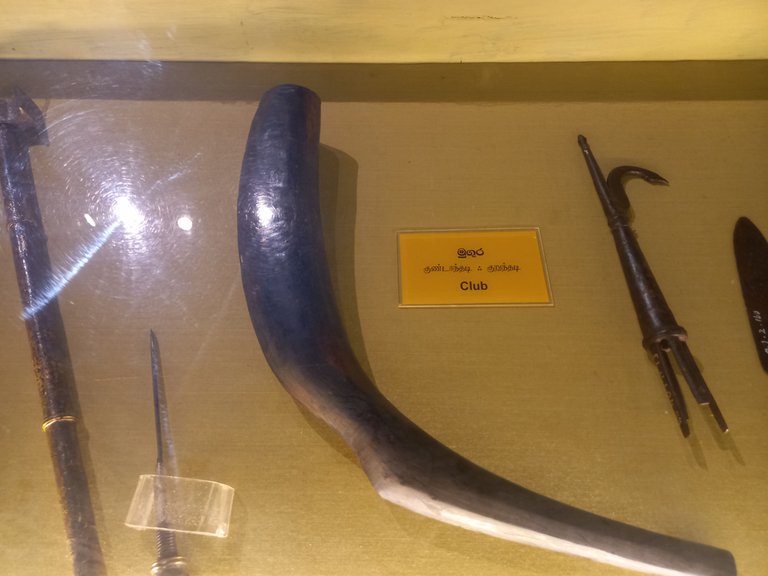
Next I got to see some Sri Lankan weapons that were used for hunting and warfare in the past. You can see the strong weapon called Mugura (Club) used by Sri Lankans for hunting animals.
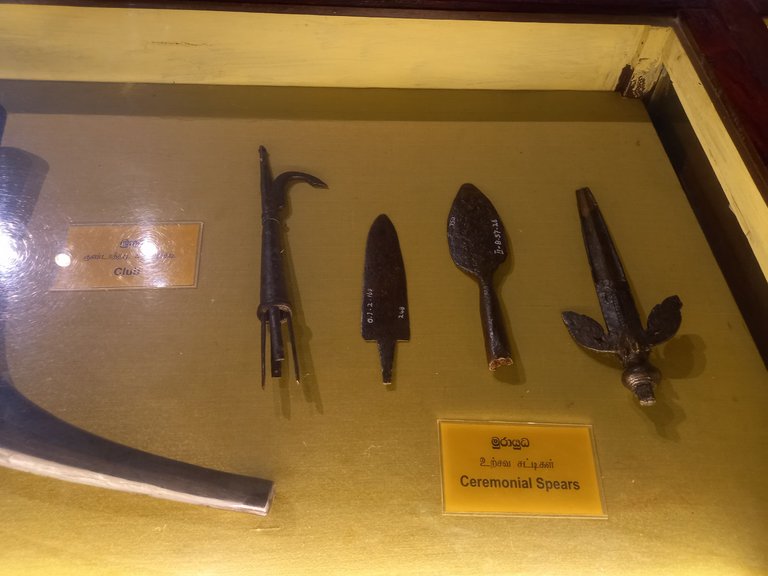
Several weapons of different shapes called Murayudha (Ceremonial spears), a strong weapon used by the natives for various purposes in the past, could also be seen in this chamber.
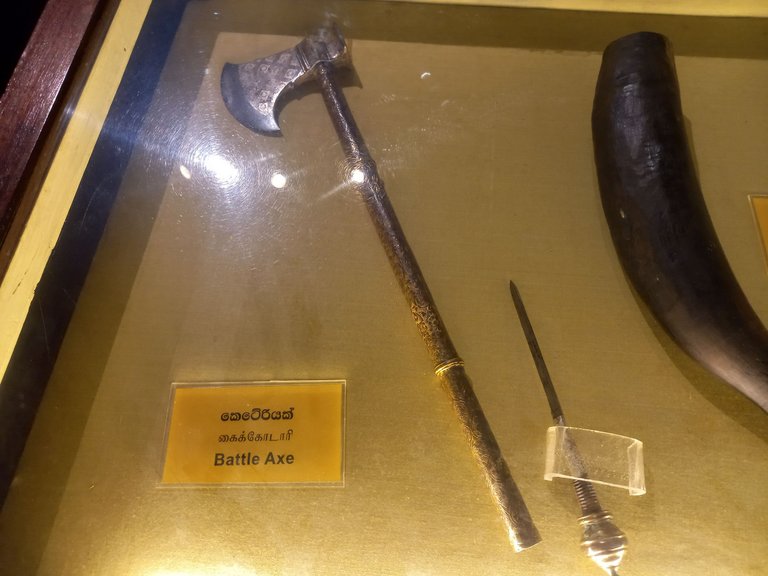
Here you can see the Keteriya (Battle axe), a type of ax used for hunting by the indigenous people who lived in Sri Lanka in the past. It is a very strong weapon.
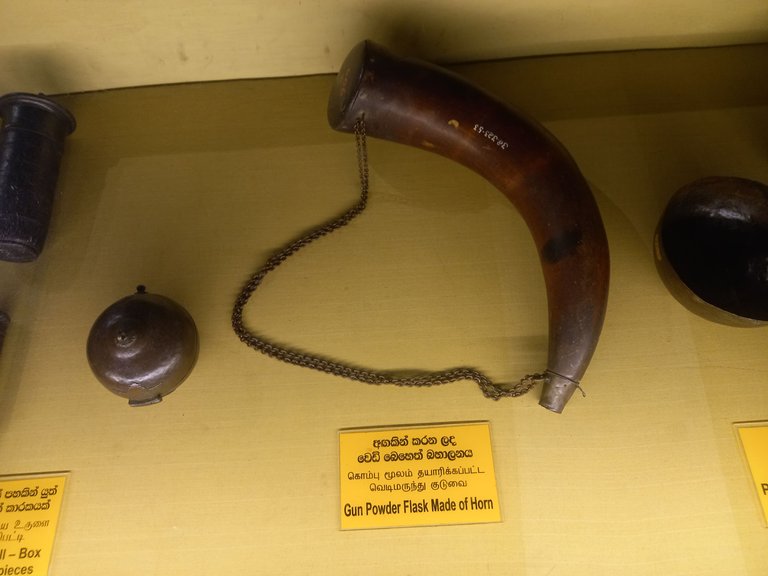
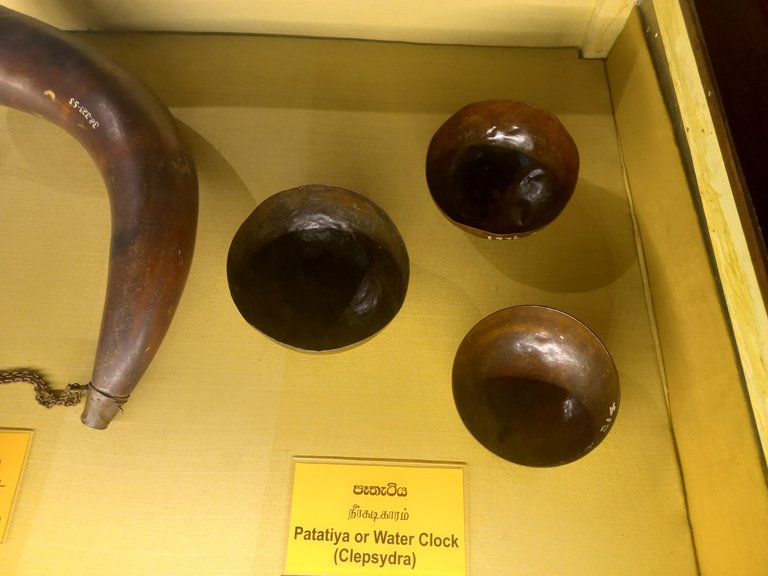
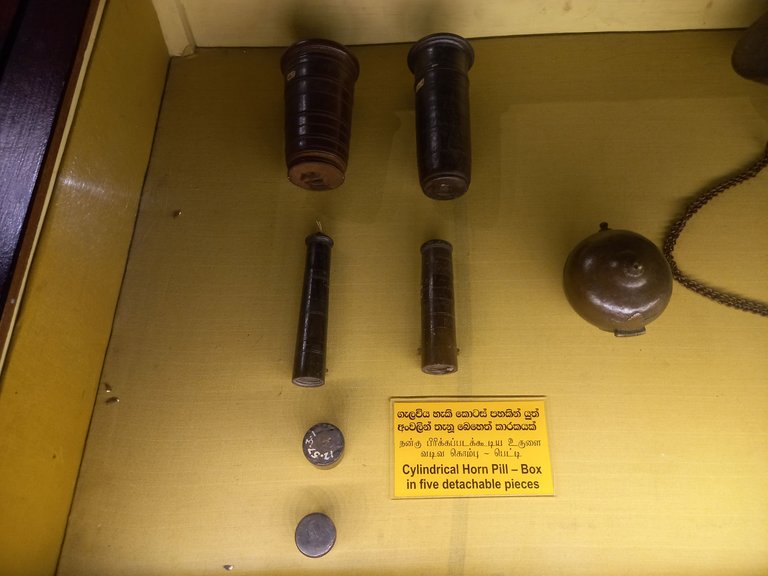
As we moved further in the National Museum of Galle, we saw a gunpowder container made from a cow horn in another booth. In addition, in the same chamber, we saw a medicinal device made of horns with five parts that could be saved and a water clock.
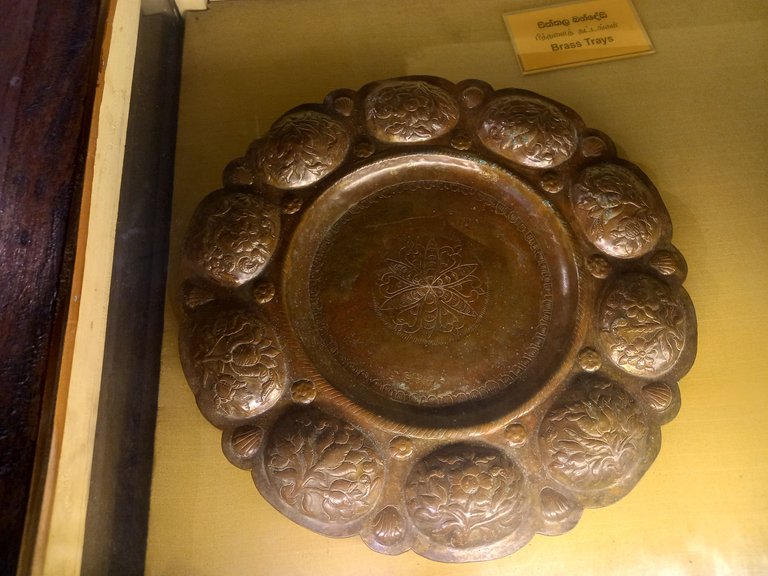
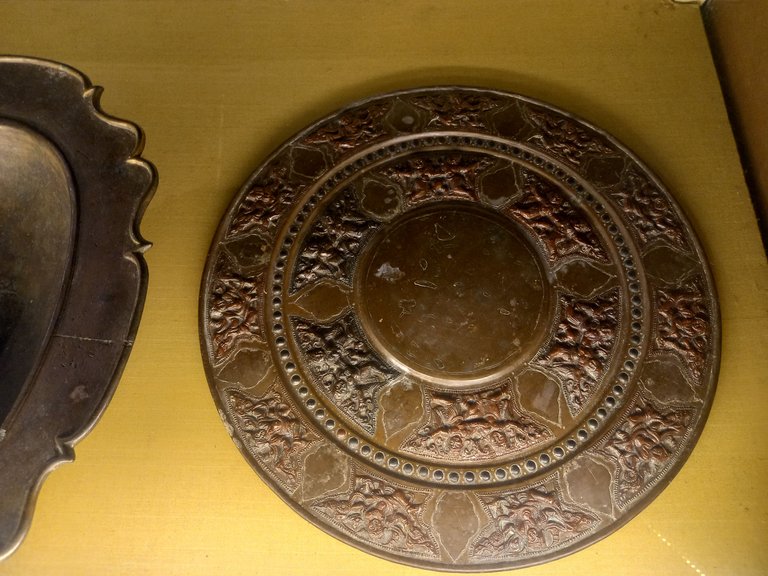
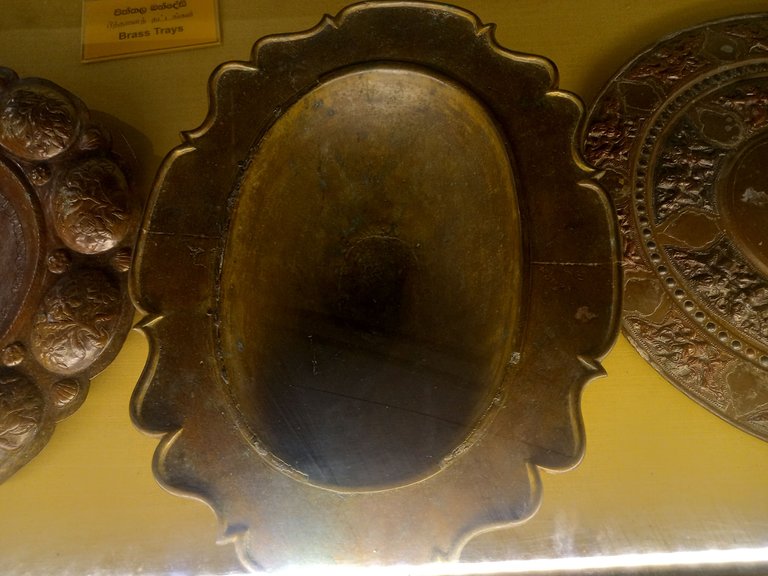
Sri Lanka's brass industry has been famous since ancient times. Mostly the areas of Kandy district were used for this purpose. There were excellent brass craftsmen in Kadugannawa, Pirimathalawa, etc. Look carefully at the shapes of the brass trays I have shown above. They are exquisitely carved and designed. You can also clearly imagine that they are amazing creations. Traditional Sinhalese carvings and cultural carvings were seen on these circular shaped brass trays.

In another booth, we got to see many great designs made of stronger ebony wood. I was more attracted to seeing the carvings of elephants here and the unique patterns that could be seen in Pettagama.
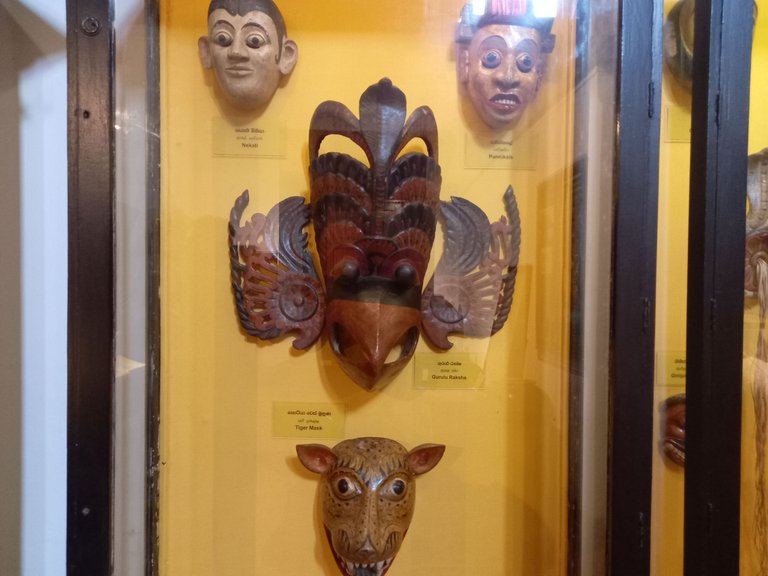
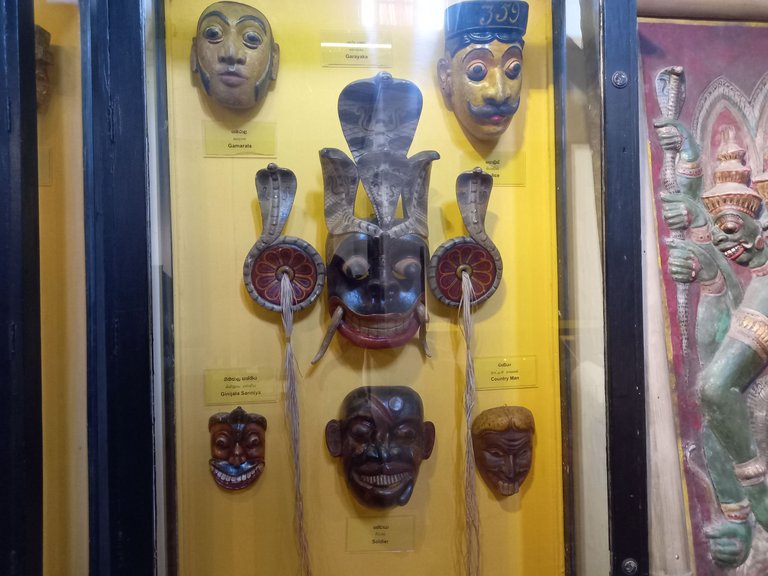
Another Sri Lankan industry that is dying out today is the mask industry. The capital of the mask industry is the city of Ambalangoda, which is about thirty kilometers from the city of Galle towards Colombo. Also, in Balapitiya town, the mask-related industry was doing well. In the Galle National Museum, other masked shapes such as Gamarala, Ginijala Sanniya, Hevaya, Garayaka, Vesiya, Nakati Man, Tiger Mask, Panikkale and Gurulu monster shapes can be seen in the same way.

An original copy of an old map showing Galle harbor and Rumssala mountain, which was measured and prepared in 1907, can be seen in the National Museum.
 | 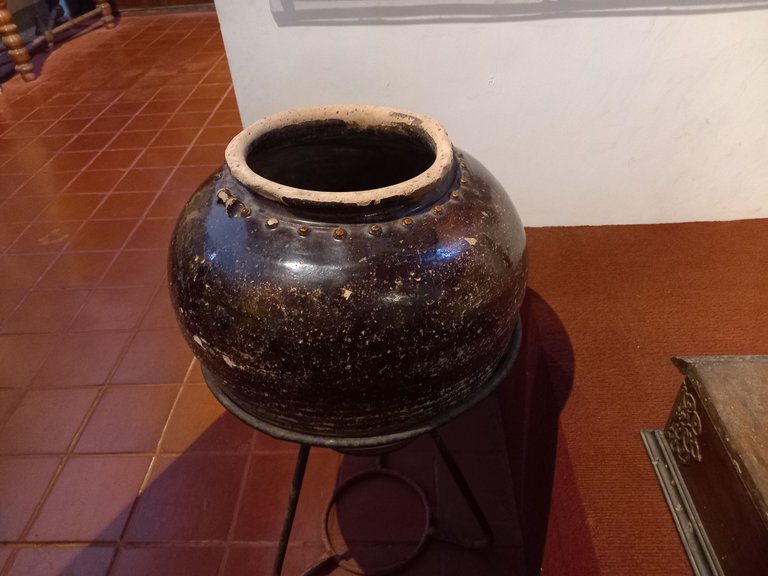 |
|---|
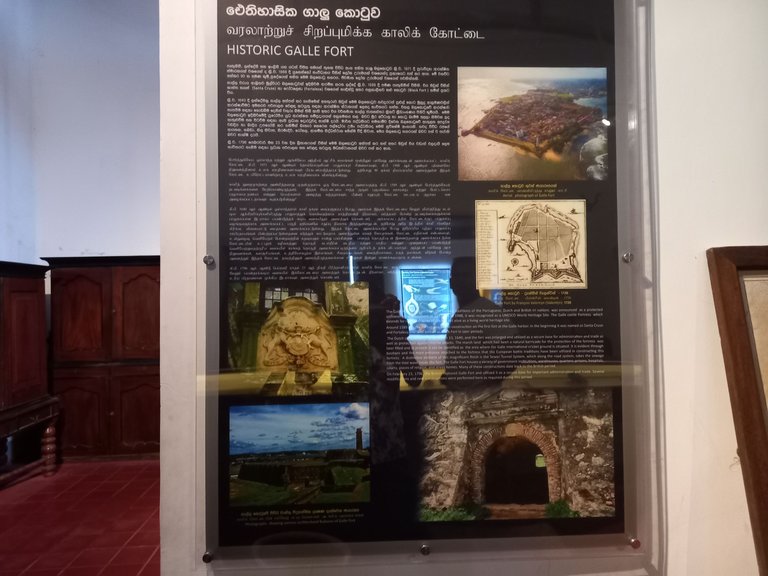
One of the most important features of the Galle National Museum is that there is a display board in the exhibition in Sinhala, English and Tamil to identify all the sculptures, paintings, maps and artefacts. Seeing it in a way that everyone can understand is also a reason to provide more educational knowledge.
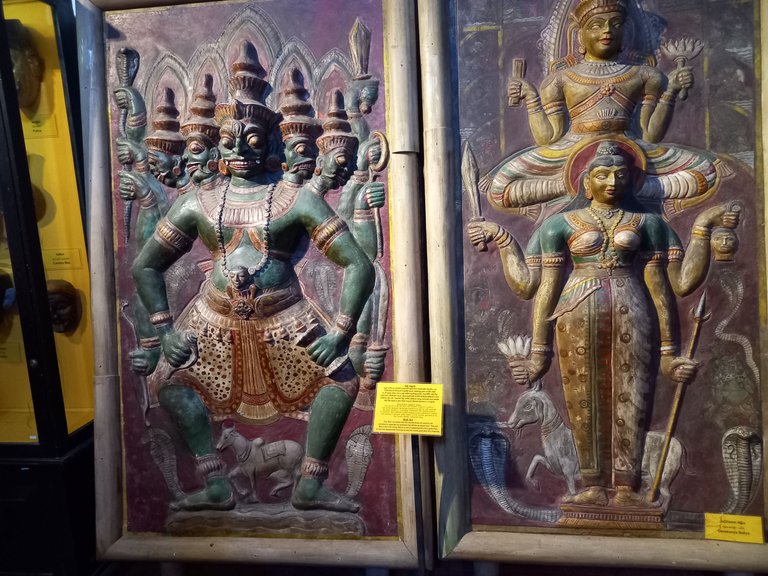
Due to the belief that sicknesses and other dangers are caused by the influence of demons, Shanthikarma and the idol sacrifices performed to ward them off were called bali. Sometimes sacrifices are also created in the form of paintings. The history of Bali Shanthikarma in Sri Lanka dates back to ancient times.
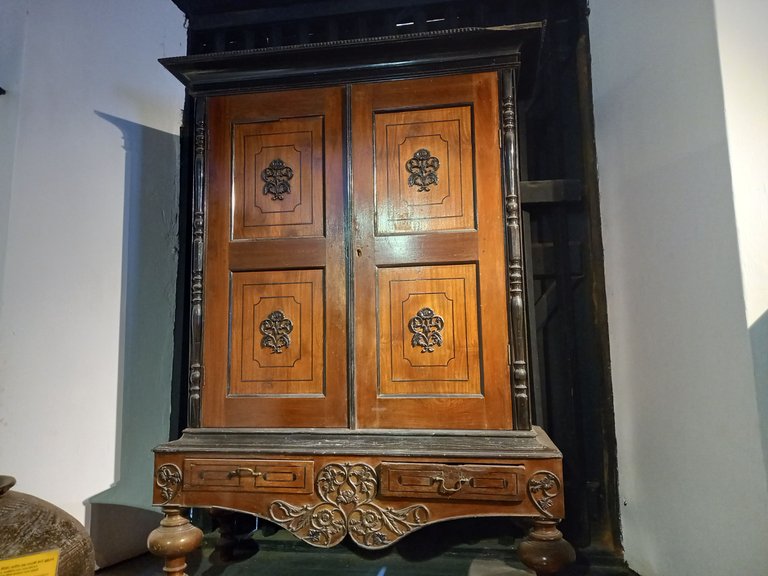
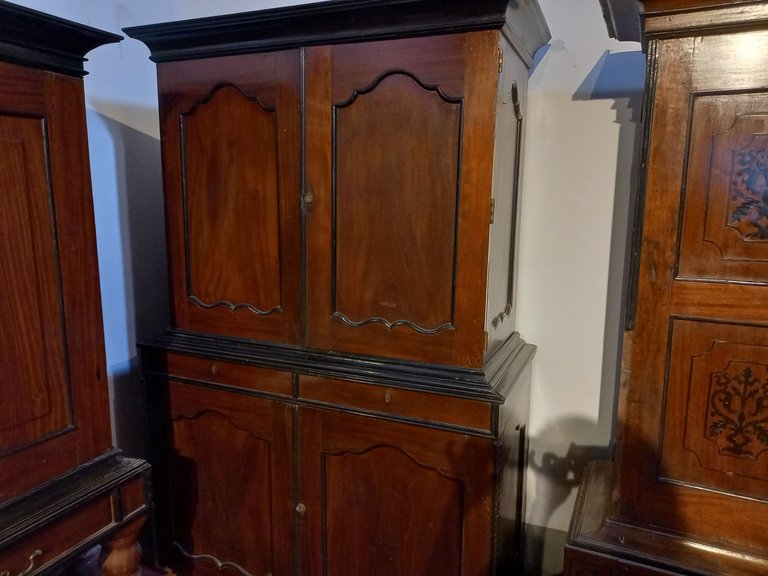
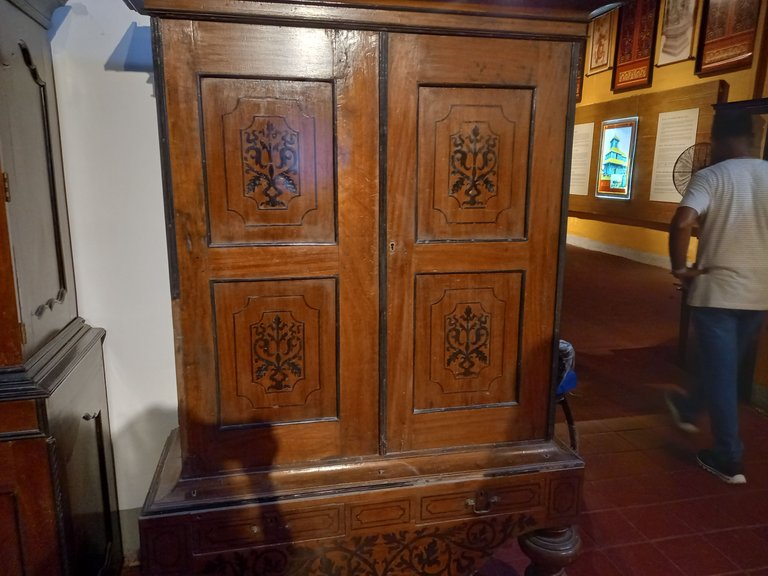
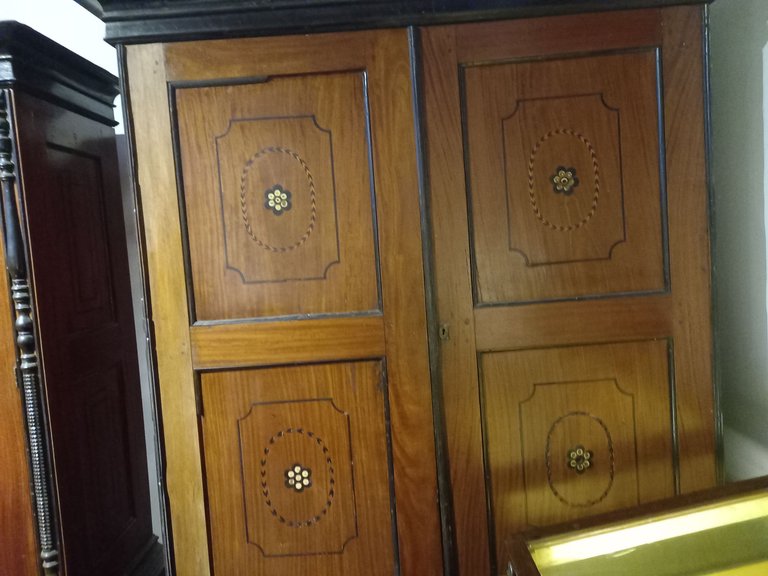
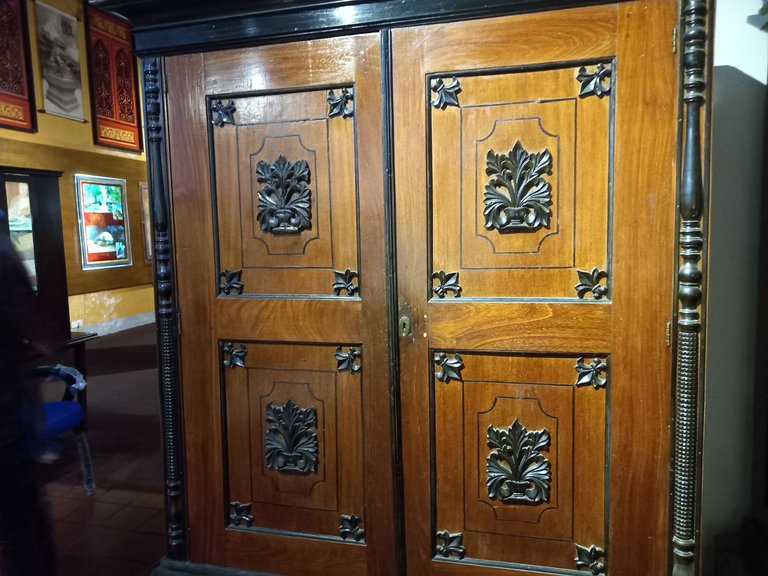
Sri Lanka's wood carving industry has flourished from the past to the present day. Therefore, these wood carvers were able to incorporate various carvings and designs for cupboards and cupboards. In this way, several wooden cupboards were seen in the Galle National Museum grounds. They were really impressive.
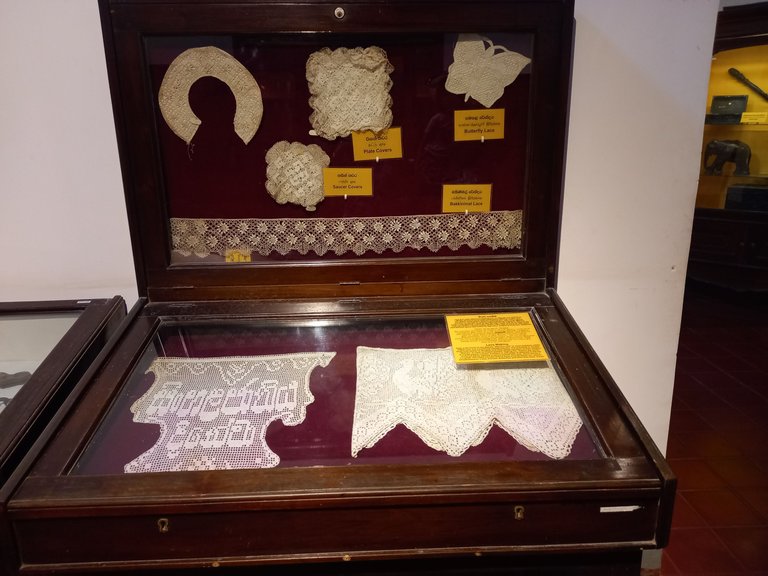

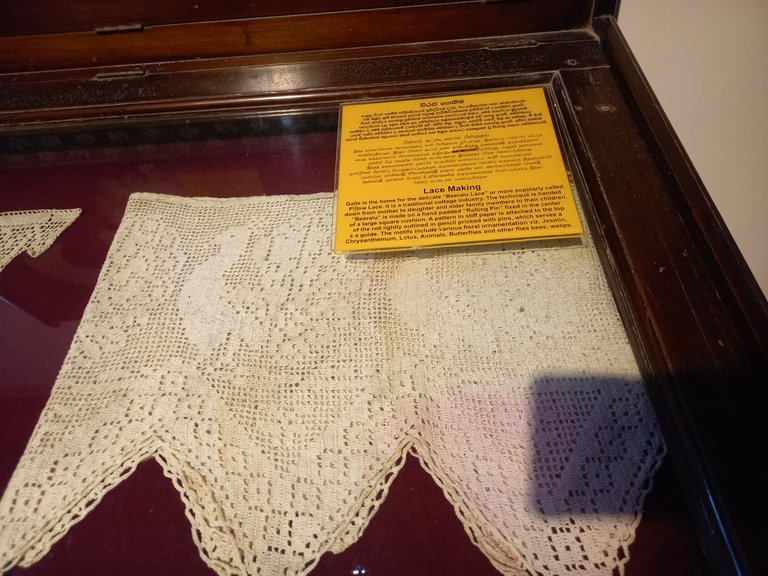
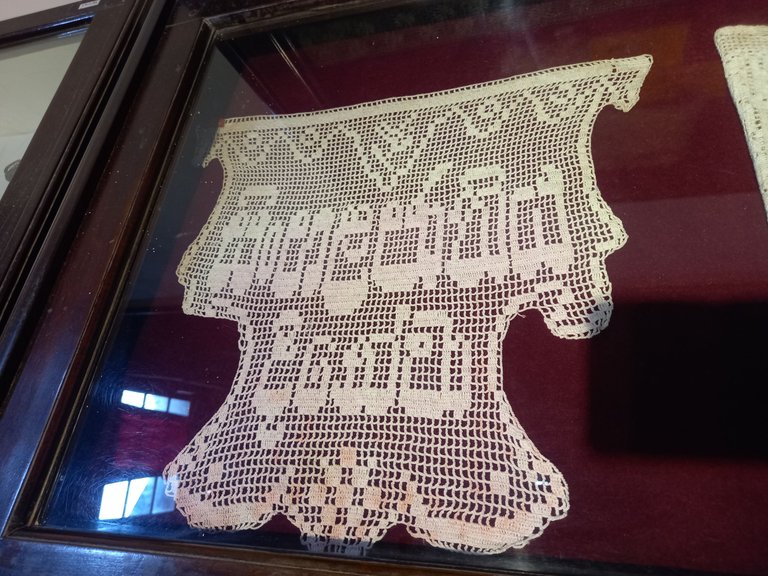
Another traditional industry in Sri Lanka is the lace making industry. Galle is famous for lace making. It is a traditional cottage industry. lace making is woven on a spinning pillow. In this chamber you can see dish covers, tasim covers, Bakinmala Rendaya and Samanala Rendaya etc.
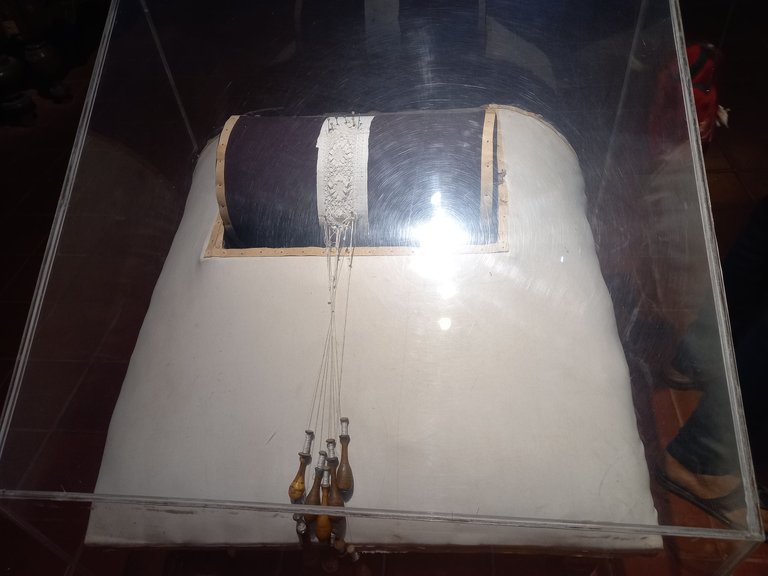
Handmade pillow lace crochot beeralu a Portuguese origin.
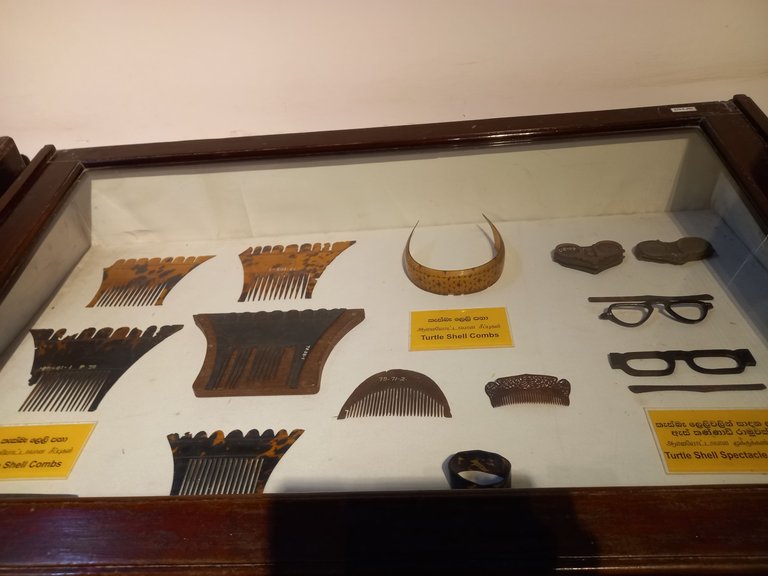
Various shaped attractive combs and eyeglass frames created from tortoise shell

Dutch coins used for trade in Sri Lanka in the past
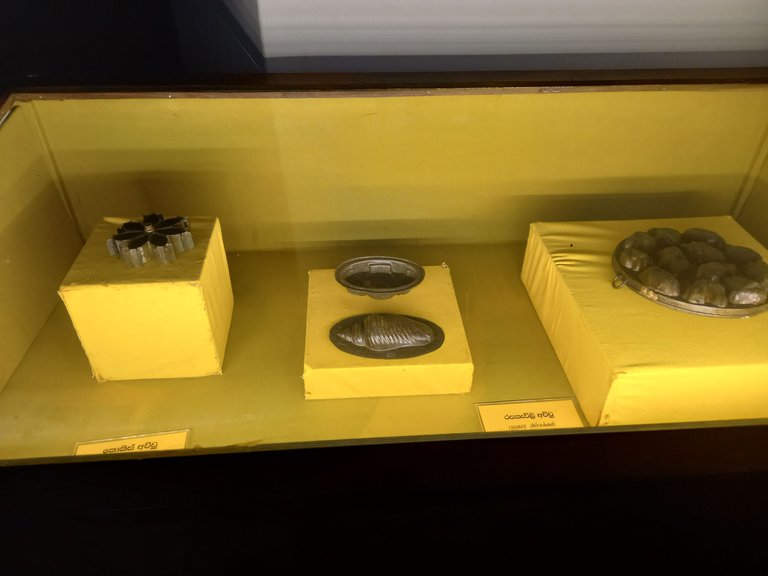
Today, April 14, is a special day for Sri Lankans because it is the Sinhala and Hindu New Year. We all make traditional sweets at home for Sinhala and Hindu New Year. At that time a steel mold was used to make all kinds of traditional sweets known as Kawum, Kokis, Mung Aluwa, Athirasa etc. Molds used to make such fans can be seen in this chamber.
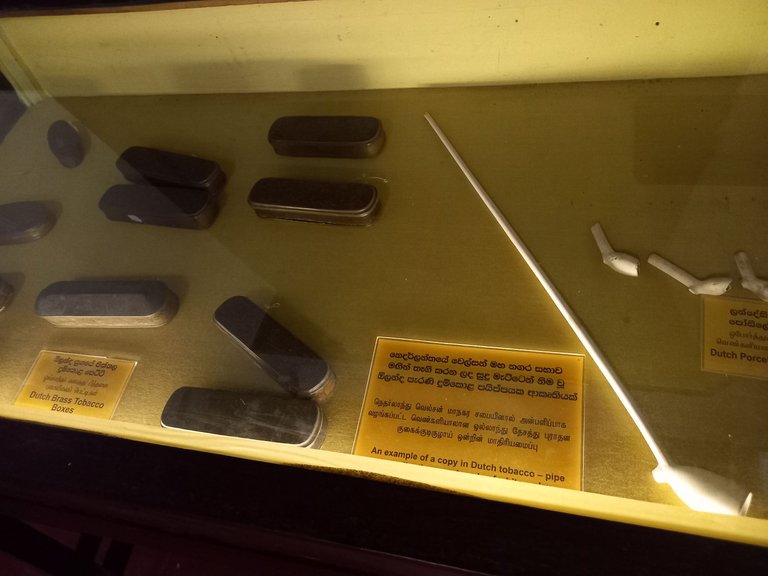
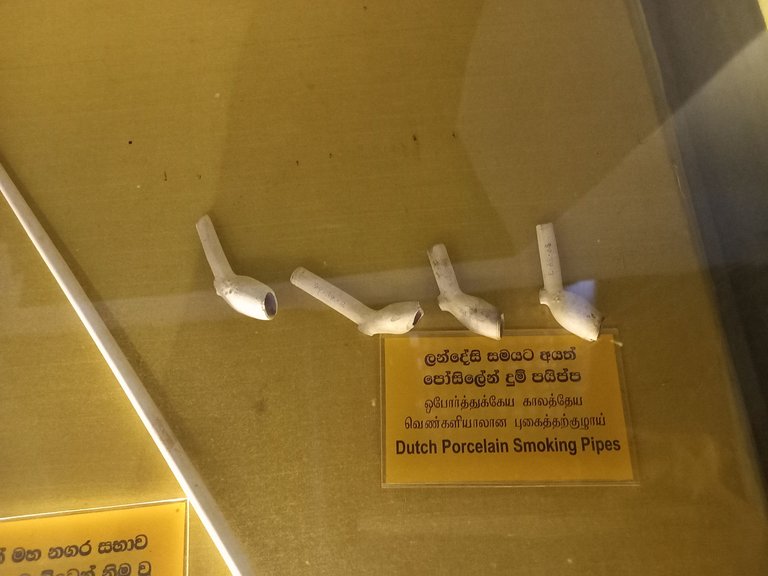
Artifacts in another chamber include a model of an old Dutch tobacco pipe in white clay, gifted by the municipality of Welsen, Netherlands, brass tobacco boxes from the Dutch period and porcelain smoking pipes from the Dutch period that can still be seen today. Galle National Museum has many artefacts to see. So I had to publish this content in three parts. This is the last part of this content. Words cannot describe the educational value I received from exploring so many of his artifacts. See you later.

Congratulations, your post has been added to Pinmapple! 🎉🥳🍍
Did you know you have your own profile map?
And every post has their own map too!
Want to have your post on the map too?
https://twitter.com/1260211375881814016/status/1646768984908500992
https://twitter.com/876485175890149378/status/1646804028423127040
https://twitter.com/314068354/status/1646870532145463296
The rewards earned on this comment will go directly to the people( @madushanka, @mariakekin ) sharing the post on Twitter as long as they are registered with @poshtoken. Sign up at https://hiveposh.com.
Yay! 🤗
Your content has been boosted with Ecency Points, by @templeflower.
Use Ecency daily to boost your growth on platform!
Support Ecency
Vote for new Proposal
Delegate HP and earn more
It is understood that a very beautiful museum where many memories are kept in the world.
I think National Museum more historical than beautiful. Many memories behind it. Thanks for feedback friend.
!ALIVE
@kawsar8035! You Are Alive so I just staked 0.1 $ALIVE to your account on behalf of @madushanka. (3/10)
The tip has been paid for by the We Are Alive Tribe through the earnings on @alive.chat, feel free to swing by our daily chat any time you want.

Hiya, @choogirl here, just swinging by to let you know that this post made it into our Honourable Mentions in Daily Travel Digest #1849.
Your post has been manually curated by the @pinmapple team. If you like what we're doing, please drop by to check out all the rest of today's great posts and consider supporting other authors like yourself and us so we can keep the project going!
Become part of our travel community:
Thank you very much @choogirl
Greetings @madushanka, what a spectacular museum,so many relics and works of art to observe, the walnut cutters are very original, first time I see them like that in the shape of animals, which by the way look very real, as for the laces, they have been in the museum for many years..., thanks for sharing nice pictures.
Happy day!
Greetings freind. Yeah every antique items available here for a long time. The national museum protected very well all relics etc. These ancient items brings us to longest history. Have a nice weekend.
!ALIVE
@belkyscabrera! You Are Alive so I just staked 0.1 $ALIVE to your account on behalf of @madushanka. (1/10)
The tip has been paid for by the We Are Alive Tribe through the earnings on @alive.chat, feel free to swing by our daily chat any time you want.

As you dear @madushanka , I love it and it is extraordinary to visit a museum, I would like to do it in the National Museum of Galle, and evidence what you affirm, the stall that shows the equipment used to chew betel dating from the 18th and 19th centuries AD. A few days ago, as a family, I also visited and published about our historical monument of the Great Mariscal de Ayacucho, located in the city of Cumaná, capital of the state of Sucre-Venezuela. I wish you many successes.
Firstly I want to say very sorry for delayed reply to you due to my two relation's funeral. So I missed to engage with other Hivers. Many ancient items and artefacts belonging to the 18th and 19th centuries were seen in this national museum. It was a blessing for us as well as it helped us to gain a lot of educational knowledge in this museum. Thanks for nice feedback. Greetings from Sri Lanka.
!ALIVE
@omarrojas! You Are Alive so I just staked 0.1 $ALIVE to your account on behalf of @madushanka. (1/10)
The tip has been paid for by the We Are Alive Tribe through the earnings on @alive.chat, feel free to swing by our daily chat any time you want.

From Venezuela, receive my condolences for the unfortunate loss of your relatives, wishing them to rest in peace. It is never too late to respond my dear @madushanka I hope we continue to visit each other.
The Galle National Museum displays provide an insightful look into Sri Lanka's interesting past. I enjoyed reading this one.
I'm glad to hear it from you.
!ALIVE
@juecoree! You Are Alive so I just staked 0.1 $ALIVE to your account on behalf of @madushanka. (2/10)
The tip has been paid for by the We Are Alive Tribe through the earnings on @alive.chat, feel free to swing by our daily chat any time you want.

Congratulations @madushanka! We are delighted to inform you that your outstanding publication was specially selected to be part of our Curated Content Catalog and was awarded RUNNER-UP in Architecture Anthology™ 24. More power!
Thank you for subscribing to Architecture+Design, an OCD incubated community on the Hive Blockchain.
Thank you fro selected my content on Runner up category.
You are most welcome dear @madushanka. Cheers! 😀
Congratulations @madushanka! You have completed the following achievement on the Hive blockchain And have been rewarded with New badge(s)
Your next target is to reach 60000 upvotes.
You can view your badges on your board and compare yourself to others in the Ranking
If you no longer want to receive notifications, reply to this comment with the word
STOPCheck out our last posts: